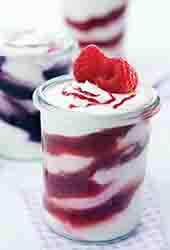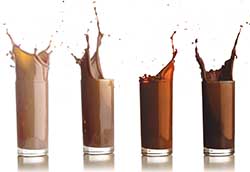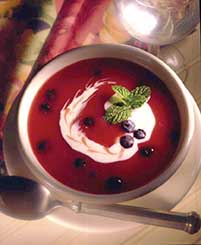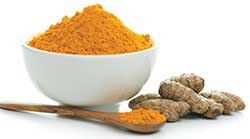Developing Coloring Solutions Naturally
INGREDIENTS
Consumers concerned with the use of synthetic food colorings in food products have taken to the Internet to voice their concerns. Vani Hari from the blog “Food Babe” started an online petition on Change.org in early 2013 urging Kraft Foods to remove synthetic yellow food colorings from its Kraft Macaroni & Cheese products and replace them with naturally derived ones. Another petition, this one sponsored by The Center for Science in the Public Interest and Renee Shutters, a mother of two from Jamestown, N.Y., calls on Mars Inc. to remove synthetic food colorings from the company’s iconic M&Ms product. Both petitions mention links between consuming synthetic food colorings and increased hyperactivity in children and that many of the same foods sold in Europe are not formulated with the colorings. The companies named in these petitions have released statements about how the synthetic colorings are evaluated and assessed for use as color additives in food sold in the United States and that they are taking into consideration consumer preferences and recent coloring technologies. Several months after Hari began her petition campaign, Kraft Foods announced that it would remove FD&C Yellow No. 5 and No. 6 from certain Kraft Macaroni & Cheese products marketed to children and reformulate using other ingredients like spices.
Grass roots-based efforts like these are just one factor in the increased awareness of naturally derived food colorings and their use in food and beverage products. In the European Union, labels on packages of foods that contain certain synthetic food colorings warn of possible effects on hyperactivity in children so as a result, food manufacturers have reformulated many products to include naturally derived coloring alternatives. In the United States, grocery store chains like Whole Foods have quality standards regarding the types of foods they sell (like those containing synthetic food colorings). And consumer awareness, the fact that people have more information at their fingertips, is influencing the dynamic around food manufacturers converting to naturally derived colorings, states Jason Armao, Director, Application and Innovation for D.D. Williamson, Louisville, Ky. (www.ddwcolor.com).
The recent media attention given to the petitions mentioned earlier and the fact that more food manufacturers are promoting their products as free from synthetic colorings may give the impression that the interest in naturally derived colorings is new, but that is not necessarily the case, says Gale Myers, Technical Services Manager, Confections and Pet, for Sensient Colors LLC, St. Louis, Mo. (www.sensient.com), who has more than 30 years of development experience. Changes in the marketplace have affected the use of naturally derived colorings, which have always been around, says Myers. Developing naturally derived colorings years ago involved formulating a coloring for a product that would be made in a particular country and sold in that country, she explains, but now with the increase of imports and exports and global trade, naturally derived colorings are developed for use in products that are made in many different countries and exported to regions around the world. She notes that her customers continually ask her team to assist in developing the best coloring solutions—both synthetic and naturally derived—so they are ready to release a product with the appropriate coloring option as the market in a particular region dictates.
The U.S. Food and Drug Administration regulates color additives and includes names of each color additive, chemical specifications, the uses and restrictions, labeling requirements, and certification requirements in the Code of Federal Regulations, Title 21, parts 70–82. The two categories of FDA-approved color additives are certified (known as FD&C colors) and exempt from certification. Certified colorings are synthetic dyes, lakes, and pigments. A sample of every batch produced must be submitted to the FDA for testing. Color additives that are exempt from certification are generally derived from plant, animal, or mineral sources and are not subject to batch testing by the FDA, though they have been evaluated by the FDA and still have to comply with the regulations set forth by the FDA. Exempt color additives such as annatto extract, vegetable juice, paprika, grape skin extract, and more are the ones that consumers, food marketers, and color additive manufacturers refer to as “natural.” The FDA, however, does not consider any color added to a food product as natural unless the color is present naturally or inherent to the product.
 While naturally derived colorings may look more appealing to consumers when they appear on the ingredient labels, formulating them into the products can be challenging due to factors like heat, light, and pH. Red hues, for instance, are one of the most challenging hues to obtain, according to an industry poll conducted by D.D. Williamson at the 2013 Food Ingredients Europe exposition. The problem is that there is very limited choice of naturally derived red colorings that are heat stable in neutral or near-neutral pH applications, remarks Armao. Carmine is an option, but since it is derived from an insect, it is not kosher and vegan, therefore some product developers choose not to use it. Beet juice concentrate for red hues is an option to use in neutral-pH applications, but it is not heat stable. Anthocyanins from certain fruits and vegetables are suitable in many applications but once the pH rises, they change colors. There are even specific challenges to the various product application categories. “For confectionery, there’s a lot of acid and flavor components that are added that could degrade color, so that’s a big challenge for us,” says Myers.
While naturally derived colorings may look more appealing to consumers when they appear on the ingredient labels, formulating them into the products can be challenging due to factors like heat, light, and pH. Red hues, for instance, are one of the most challenging hues to obtain, according to an industry poll conducted by D.D. Williamson at the 2013 Food Ingredients Europe exposition. The problem is that there is very limited choice of naturally derived red colorings that are heat stable in neutral or near-neutral pH applications, remarks Armao. Carmine is an option, but since it is derived from an insect, it is not kosher and vegan, therefore some product developers choose not to use it. Beet juice concentrate for red hues is an option to use in neutral-pH applications, but it is not heat stable. Anthocyanins from certain fruits and vegetables are suitable in many applications but once the pH rises, they change colors. There are even specific challenges to the various product application categories. “For confectionery, there’s a lot of acid and flavor components that are added that could degrade color, so that’s a big challenge for us,” says Myers.
The work in the industry is about “closing the gap between natural color science and certified technology,” according to Michael Geraghty, President of Sensient Colors. This includes using a variety of technologies to develop naturally derived colorings that have better heat and light stability in certain applications, can withstand various pH levels, and can be used with other colorings to achieve a wider range of hues. It also means sourcing new raw materials for potential use as naturally derived colorings. This article will explore many of the new naturally derived colorings options available to product developers.
--- PAGE BREAK ---
Connecting with Consumers
Food and beverage manufacturers position various claims and messaging about the products on the front of the packaging to communicate with consumers, and this is one way to attract those consumers looking for products with a “clean label,” explains Amelie Hayte, Key Account Manager for GNT USA Inc., Tarrytown, N.Y. (www.gnt-group.com). And while manufacturers cannot make “all natural” claims about the color additives used in the products, she adds, they can include statements like “colored with fruits and vegetables” and “all ingredients derived from natural sources.” Another opportunity to appeal to consumers is with the ingredient statement. “This is what the consumers who are more health conscious will look at for specific ingredients that they don’t want in the product or ingredients that they can easily recognize or feel safe about consuming,” states Hayte. Here, consumers might find naturally derived colorings listed as “colored with carrot juice” or “fruit and vegetable juice (for color).” The FDA allows color additives exempt from certification to be declared as “artificial color,” “artificial color added,” and “color added,” or “colored with _” or “_ color” with the blanks filled in with the name of the additive as listed in the CFR, Title 21, section 101.22.
 Hayte, who presented information about fruit- and vegetable-based food colorings at the IFT Chicago Section 2013 Innovation NOW! Forum, went on to explain that some of the exempt color additives are derived from natural raw materials using solvent extraction or some other chemical process and that GNT offers a line of fruit and vegetable juice colorings that are physically processed with water. The EXBERRY® colorings are concentrates produced from fruits, vegetables, and edible plants and can be labeled as fruit juice or vegetable juice in the U.S.—very appealing to label-conscious consumers, remarks Hayte. The newest addition to the EXBERRY line announced in February 2014 is EXBERRY OD, oil-dispersible fruit- and vegetable-based colorings for use in chocolate applications.
Hayte, who presented information about fruit- and vegetable-based food colorings at the IFT Chicago Section 2013 Innovation NOW! Forum, went on to explain that some of the exempt color additives are derived from natural raw materials using solvent extraction or some other chemical process and that GNT offers a line of fruit and vegetable juice colorings that are physically processed with water. The EXBERRY® colorings are concentrates produced from fruits, vegetables, and edible plants and can be labeled as fruit juice or vegetable juice in the U.S.—very appealing to label-conscious consumers, remarks Hayte. The newest addition to the EXBERRY line announced in February 2014 is EXBERRY OD, oil-dispersible fruit- and vegetable-based colorings for use in chocolate applications.
Europe’s Growing Market for Coloring Foods
In Europe, ingredients like GNT’s EXBERRY colorings are considered coloring foods (also called coloring foodstuffs) and are gaining popularity with some food manufacturers because they are regarded as ingredients rather than additives in the European Union and therefore do not have E numbers that correspond to them. E numbers refer to the labeling codes given to all food additives approved for use in the EU. Food formulated with any of the E number-designated “Southampton Six” food additives used as colorings—so called for a study out of Southampton University that found these colorings and a food preservative may increase hyperactivity in children—must carry a label that states “may have adverse effects on activity and attention in children.”
As a result of this, many product developers began to reformulate products without these six additives, and food coloring manufacturers provided an array of alternative food colorings, including ones that do not carry E number designation, which are often perceived as more consumer-friendly.
The European Commission Standing Committee on the Food Chain and Animal Health recently published Guidance Notes on how to determine if a food extract is a color or a coloring food, which it defines as a food additive and a food with coloring properties, respectively (EC, 2013). Specifically, the European Commission Guidance Notes state that coloring foods are concentrates or extracts derived from foods like fruits, vegetables, and herbs that retain the essential characteristic properties (coloring properties/pigment content) of the source material through processes without the use of selective physical or chemical extraction. The fact that coloring foods are considered ingredients and do not need to declare E numbers is attractive to food manufacturers looking to appeal to those consumers who want food and beverage products formulated with minimally processed ingredients and ingredients that have recognizable and easy to understand names. For example, Chr. Hansen, Hoersholm, Denmark (www.chr-hansen.com), a global manufacturer of a range of naturally derived colorings, including coloring foods, in February 2014 announced that it will make major upgrades to its processing, warehousing, and laboratory facilities for coloring foods in Canossa, Italy. Plans include developing new naturally derived ingredients and expanding offerings in the company’s FruitMax® range of coloring foods.
Innovate and Improve Coloring Options
The study out of the University of Southampton and the resulting labeling regulation has factored into the demand by consumers for products formulated with naturally derived colorings and for products with so-called clean labels, remarked George Kean, Director of R&D—Colors for Kalsec, Kalamazoo, Mich. (www.kalsec.com), during a presentation at the IFT Chicago Section 2013 Innovation NOW! Forum. His company produces a range of naturally derived ingredients, and one of the newer developments in the area of food colorings is carrot emulsions. These mixtures of alpha- and beta-carotenes are an alternative to FD&C Yellow No. 5 and No. 6 and synthetic (nature identical) beta-carotene, can be labeled as “carrot extract (color),” and are formulated to provide better stability to heat, light, and oxidation, explained Kean. Furthermore, the carrot emulsions are said to disperse evenly in water and to function in cloudy and clear beverages with no ringing. Kalsec has also demonstrated the effectiveness of the carrot emulsion food colorings in liquid seasonings, dressings, sauces, ice cream, and yogurt.
A recent innovation in which scientists at D.D. Williamson have made significant progress is in oil dispersible technology, reports Campbell Barnum, Vice President, Branding and Market Development for the company. It involves the development of a proprietary method of adding water-soluble colorings to oil-based systems or for plating to provide even distribution. Some of the benefits of this include even distribution in dry seasoning blends, reduction of color migration into icings, and easy dispersing in liquid or hard fat. The scientists are also conducting research on anthocyanins to develop new purple hues and continue research on making some of the other colorings like reds, blues, and greens more heat and acid stable. And they even have released a line of naturally derived flavorings that impart incidental coloring properties.
--- PAGE BREAK ---
 One of the newest naturally derived coloring ingredients offered by Sensient Colors is Natural Brown. The colorings in this portfolio, which provide alternatives to caramel and synthetic colorings, offer a range of brown shades from yellow–brown to deep auburn. What’s more, there are options suitable for use in applications across a variety of pH values. Geraghty explains that the company is at the forefront of emulsion technology as well, and has established its Advanced Emulsion Technology of combining multiple oil- and water-based naturally derived colorings in a single delivery system. A benefit to the food manufacturer is that the technology can create new shades that were not attainable in the past.
One of the newest naturally derived coloring ingredients offered by Sensient Colors is Natural Brown. The colorings in this portfolio, which provide alternatives to caramel and synthetic colorings, offer a range of brown shades from yellow–brown to deep auburn. What’s more, there are options suitable for use in applications across a variety of pH values. Geraghty explains that the company is at the forefront of emulsion technology as well, and has established its Advanced Emulsion Technology of combining multiple oil- and water-based naturally derived colorings in a single delivery system. A benefit to the food manufacturer is that the technology can create new shades that were not attainable in the past.
 Blue Colorings Offer New Development Opportunities
Blue Colorings Offer New Development Opportunities
Through focus groups and test marketing, some of the major food companies have discovered that the color blue is overwhelmingly attractive, perhaps because there are few naturally occurring blue foods, according to information provided by the U.S. Highbush Blueberry Council, San Mateo, Calif. (www.blueberry-tech.org). Blueberries can add a wide range of blue hues in culinary applications and consumer packaged goods like ice cream, yogurt, salsas and sauces, and pancake mixes. The U.S. Highbush Blueberry Council even notes that the deep-blue hues of blueberries are featured as toppings for conchas (pastries), decorations on polvorones (cookies), and ingredients in helados, licuados, and ponches (ice creams, milk shakes, and fruit-flavored drinks), which are popular sweet applications found in Hispanic cuisines.
The importance of the color blue to the food industry cannot be over-stated. Blue coloring is not a high-volume coloring, but it is an important component to a coloring manufacturer’s portfolio, states Geraghty. For one thing, it is used to make other shades like green and purple, even black. There is a market-driven need for blue coloring, so scientists at Sensient Colors, which offers three blue coloring options in a vegetable juice, a patent-pending pH-modified anthocyanin, and spirulina, continually look for new botanical sources for blue coloring, says Karen Brimmer, Manager, Color Innovation Food Colors NA for Sensient Colors. She and her team members work with affiliates around the world who have access to different fruits and vegetables that are not available in the U.S. to extract pigments and perform further tests. Geraghty remarks that while Sensient Colors’ three blue coloring options represent the broadest platform for the color, none of them can completely replace FD&C Blue No. 1, so improvements and new developments continue.
WILD Flavors, Zug, Switzerland (www.wildflavors.com), offers an acid-stable blue color additive derived from a blend of fruit juices. It functions in both food and beverages applications in a pH of 2.5–8.0, including nonalcoholic and alcoholic beverages, bakery, confections, dairy, dips, sauces, dressings, and marinades. Available in both liquid and powder forms, WILD’s acid-stable blue coloring can be used on its own or blended with other colorings to produce shades of green and purple.
WILD Flavors debuted the coloring several years ago to give food manufacturers a naturally derived blue color additive to give food manufacturers selling food in the U.S. an alternative to spirulina extract, an ingredient derived from cyanobacteria (blue-green algae) that has been approved for use as a food coloring in Europe. The U.S. Food and Drug Administration in August 2013 amended the color additive regulations to approve the use of spirulina extract made from the dried biomass of the cyanobacteria Arthrospira platensis as a color additive in candy and chewing gum in response to a petition filed by Mars (Federal Register, 2013). While spirulina can help manufacturers achieve blue hues or shades of green and purple when blended with other colorings, its use is still limited due to heat, acid, and light stability issues, says Armao.
Companies are investing in the development of coloring options derived from spirulina that perform better in low-pH applications, and retain their vibrancy and shade when exposed to heat and light. ROHA USA LLC, St. Louis, Mo. (www.roha.com), for example, offers Futurals Spirulina Blue, its version of spirulina-derived blue food coloring that is said to completely dissolve in water and maintain a consistent blue hue in applications with a pH less than 5.5. Modified anthocyanin, a coloring traditionally used by product developers who wanted to achieve certain blue hues in foods, does have some challenges associated with it, according to the company. These include not completely dissolving when used in a certain form, changing to a violet hue at pH less than 5.5, and producing a dull blue color in coatings. ROHA has demonstrated Futurals Spirulina Blue’s functionalities in ice cream, biscuit filling, chocolate, marshmallow, jelly gum, and coating applications and that it can be blended with other ingredients to produce either green or violet shades.
--- PAGE BREAK ---
Working Out the Bugs
Starbucks Corp. in 2012 faced public scrutiny for its use of carmine, a coloring made from pigments derived from the cochineal insect, in its strawberry-flavored smoothies and Strawberries & Crème Frappuccino. Citing concerns over potential allergic reactions in consumers and that the ingredient is not vegan- and vegetarian-friendly or appropriate for a kosher diet, a consumer-backed online petition campaign on the website Change.org called on the company to remove the red coloring from its products and replace it with one derived from certain fruits or vegetables. The FDA requires the ingredient to be labeled in the statement of ingredients as “carmine” or “cochineal extract.” Shortly after the campaign began in early 2012, Starbucks announced that it would begin using a tomato lycopene ingredient in place of carmine to color the beverages.
Dannon faces similar criticism from a Center for Science in the Public Interest-sponsored petition on Takepart.com for its use of the beetle-based coloring ingredient in some of its fruit-flavored yogurts.
LycoRed Corp., Orange, N.J. (www.lycored.com), offers a number of ingredient alternatives to carmine for food and beverage applications. The various formulations of its tomato lycopene ingredient Tomat-O-Red® are said to be stable across a wide range of pH levels, light conditions, and high temperatures, and in the presence of vitamin C. They can provide deeper red color with blue backgrounds similar to shades produced by carmine and remain stable in applications like confections, dairy, and beverages. LycoRed uses a patented process to extract lycopene, micronize it, and formulate it to provide specific red hues.
Investigating New Eco-Friendly Extraction Methods
Naturex, Avignon, France (www.naturex.com), a manufacturer of plant-based, naturally derived ingredients, including colorings, and the University of Avignon in September 2013 created a joint research laboratory to further investigate and develop the process of eco-friendly extraction. The new laboratory, called ORTESA (the French acronym for Optimization and Research on Extraction Technologies and Alternative Solvents), will allow researchers to collaborate in one location to study the various aspects of eco-friendly extraction, a relatively new process. It involves incorporating sustainable methods in all of the steps in extraction, including choosing the solvent or technologies, utilizing by-products, reducing unitary operations, and limiting chemical alteration of botanical extracts. Naturex reports that the laboratory will be fully operational by October 2014.
Naturex created its own concept supermarket filled with product prototypes made with its ingredients at its booth during the 2013 Food Ingredients Europe. Various confections made with Naturex’s naturally derived colorings showed how, as Paul Janthial, Business Unit Director for Food & Beverage at Naturex explained, product developers could formulate foods and beverages with naturally derived colorings in a cost-effective way. The company features two lines of naturally derived colorings that comply with U.S. food regulations. The first, VegeBrite™, are derived from concentrates of fruits and vegetables, and the second, E-Color™, are extracted and isolated from naturally sourced raw materials.
Today, there is no segment in the industry that is not evaluating the potential of using naturally derived colorings, remarks Geraghty. Consumers not only in the U.S. but in countries around the world are asking food manufacturers to use naturally derived colorings. Plenty of options are available for product developers even as coloring manufacturers work to increase the stability and functionality of the naturally derived colorings in applications where they are still a challenge to use, says Armao. As a result of improvements to some naturally derived colorings and demand from consumers for more foods and beverages made with naturally derived ingredients, product developers are adding color to a number of products with these colorful options.
--- PAGE BREAK ---
Natural Coloring Options Proliferate
Manufacturers of color additives continue to expand their portfolios of naturally derived colorings to meet the growing demand in markets around the world and are developing ways to formulate some of these colorings to overcome various functionality challenges. For example, FMC BioPolymer, Ewing, N.J. (www.fmcbiopolymer.com), offers a coloring derived from annatto that is said to have better stability in mild acidic applications like fermented dairy, stabilized oleoresin paprika emulsions that can minimize ring formation in liquid systems, and betanin pigments (the most abundant pigment in beet root) that provide a much wider spectrum of pink, magenta, and red–purple hues for use in a variety of applications and a broader range of pH values. San Joaquin Valley Concentrates, Fresno, Calif. (www.sjvconc.com), derives its red anthocyanin pigments from its Rubired grape varietal, which, the company reports, produces anthocyanins that are diglucosides. Other red grapes and European grape skin extracts are monoglucosides, and the additional glucose on the anthocyanins from Rubired grapes gives the anthocyanins stronger color stability, according to the company. Food Ingredient Solutions, Teterboro, N.J. (www.foodcolor.com), features a line of transparent micro-emulsion colorings that can provide better clarity, stability, and shelf life when used in beverage applications. The colorings in the FISclear™ line are extracts of and oils made from paprika, beta-carotene, carotenal, lycopene, carrot oil, palm carotene, and canthaxanthin and produce hues from pale yellow to greenish yellow, various peach, orange, and pink colors, and deep red shades. The company used GMO-free emulsifier ingredients to produce emulsions with particle sizes 50–100 nm.
 DSM, Heerlen, the Netherlands (www.dsm.com), uses a fermentation process to produce its CaroCare® line of naturally sourced carotenoids. The carotenoid beta-carotene is converted to vitamin A by the body when consumed and has antioxidant properties. DSM reports that many consumers say that they are aware of the healthful benefits of beta-carotene and prefer it as a coloring in foods and beverages. Curcumin is the main pigment found in turmeric. It produces a slightly reddish, bright yellow color. Turmeric is used both as a spice and a food coloring, and research continues to show its potential health benefits. Frutarom Switzerland Ltd. Health BU, Wädenswil, Switzerland, and Aquanova AG, Darmstadt, Germany (www.aquanova.de), have partnered to market the proprietary NovaSOL® Curcumin as a solubilized, bioavailable form of curcumin. Frutarom has developed technology to create the clear, yellow, water-soluble ingredient that it says has a better absorption rate and bioavailability than standard curcumin extracts (Schiborr et al, 2014).
DSM, Heerlen, the Netherlands (www.dsm.com), uses a fermentation process to produce its CaroCare® line of naturally sourced carotenoids. The carotenoid beta-carotene is converted to vitamin A by the body when consumed and has antioxidant properties. DSM reports that many consumers say that they are aware of the healthful benefits of beta-carotene and prefer it as a coloring in foods and beverages. Curcumin is the main pigment found in turmeric. It produces a slightly reddish, bright yellow color. Turmeric is used both as a spice and a food coloring, and research continues to show its potential health benefits. Frutarom Switzerland Ltd. Health BU, Wädenswil, Switzerland, and Aquanova AG, Darmstadt, Germany (www.aquanova.de), have partnered to market the proprietary NovaSOL® Curcumin as a solubilized, bioavailable form of curcumin. Frutarom has developed technology to create the clear, yellow, water-soluble ingredient that it says has a better absorption rate and bioavailability than standard curcumin extracts (Schiborr et al, 2014).
www.ift.org
Members Only: Read more about naturally derived food colorings online at www.ift.org. Type the keywords into our search box at the upper right side of our home page.
 Karen Nachay,
Karen Nachay,
Senior Associate Editor
[email protected]
References
EC. 2013. Guidance notes on the classification of food extracts with colouring properties. European Commission, Brussels, Belgium. Nov. 29.
Federal Register. 2013. Listing of color additives exempt from certification, spirulina extract. U.S. Food and Drug Administration, Dept. of Health and Human Services. 21 CFR Part 73, Aug. 13.
Schiborr, C., Kocher, A., Behnam, D., Jandasek, J., Toelstede, S., and Frank, J. The oral bioavailability of curcumin from micronized powder and liquid micelles is significantly increased in healthy humans and differs between sexes. 2014. Mol. Nutr. & Food Res. Published online early, doi: 10.1002/mnfr.201300724.
